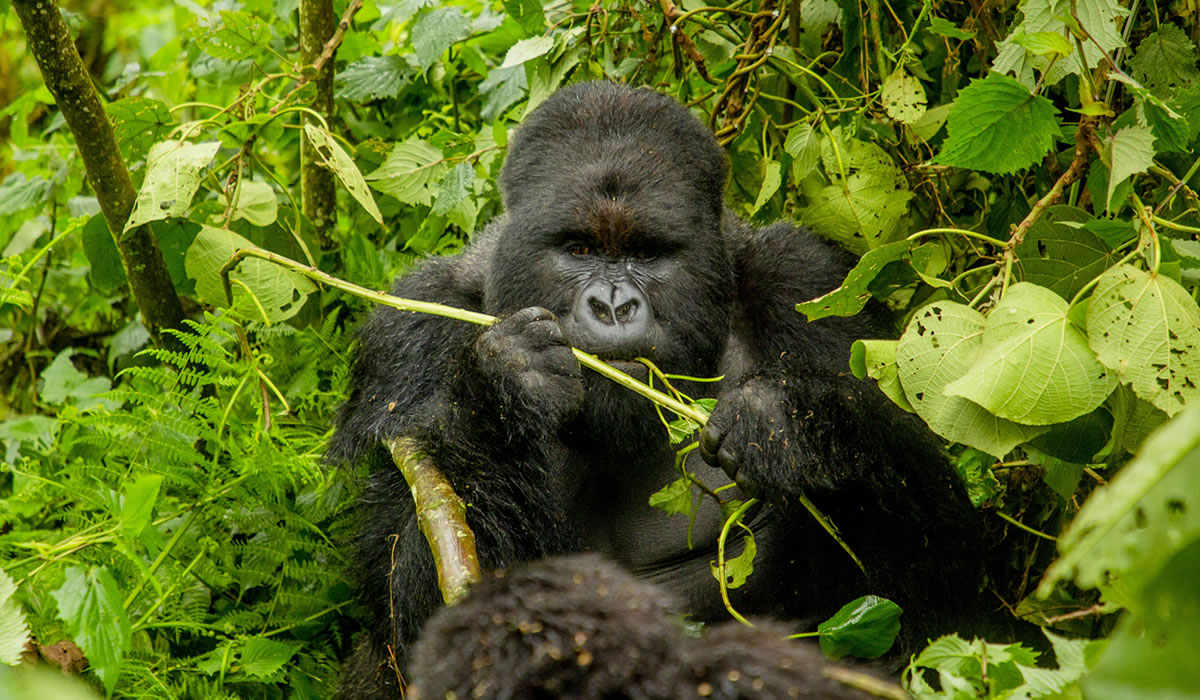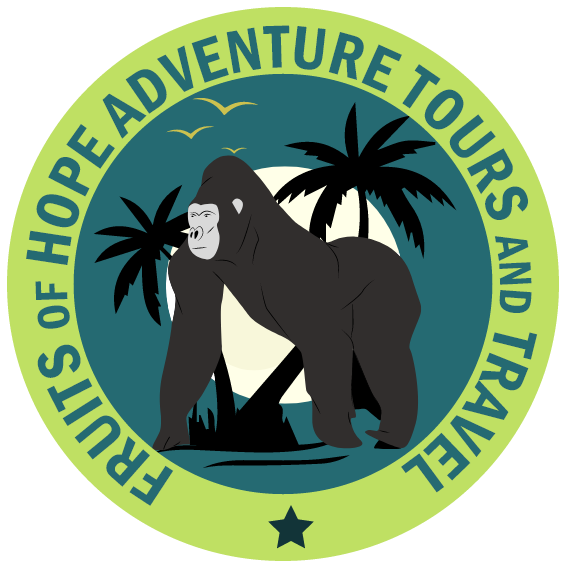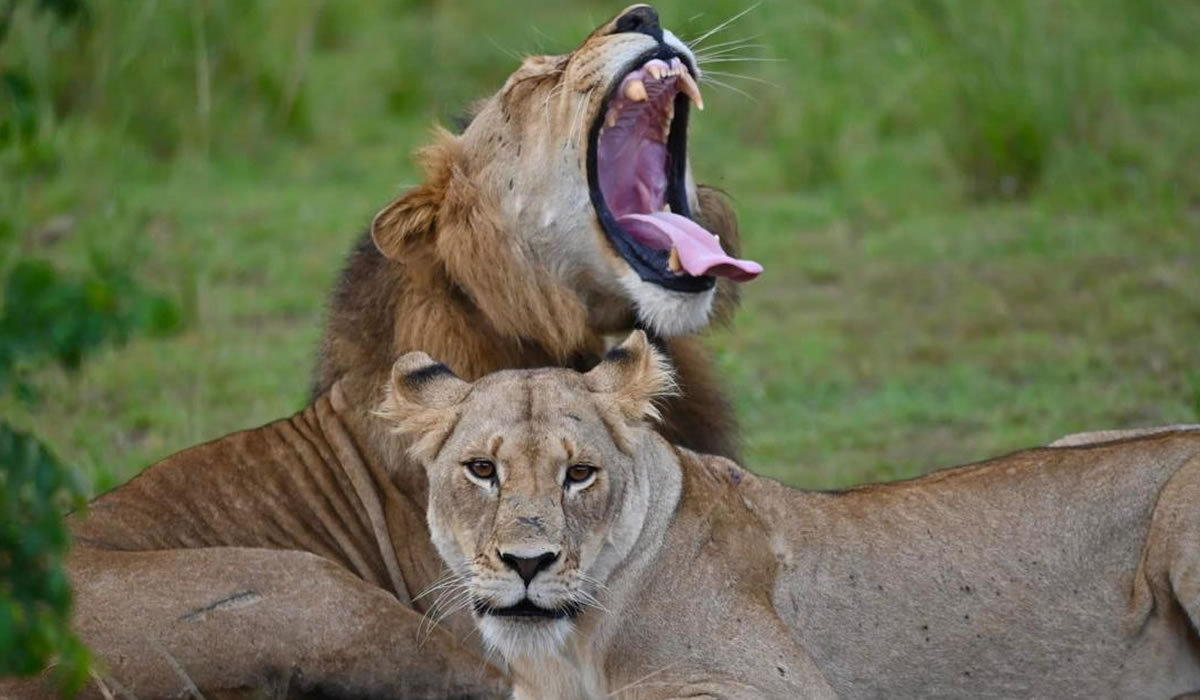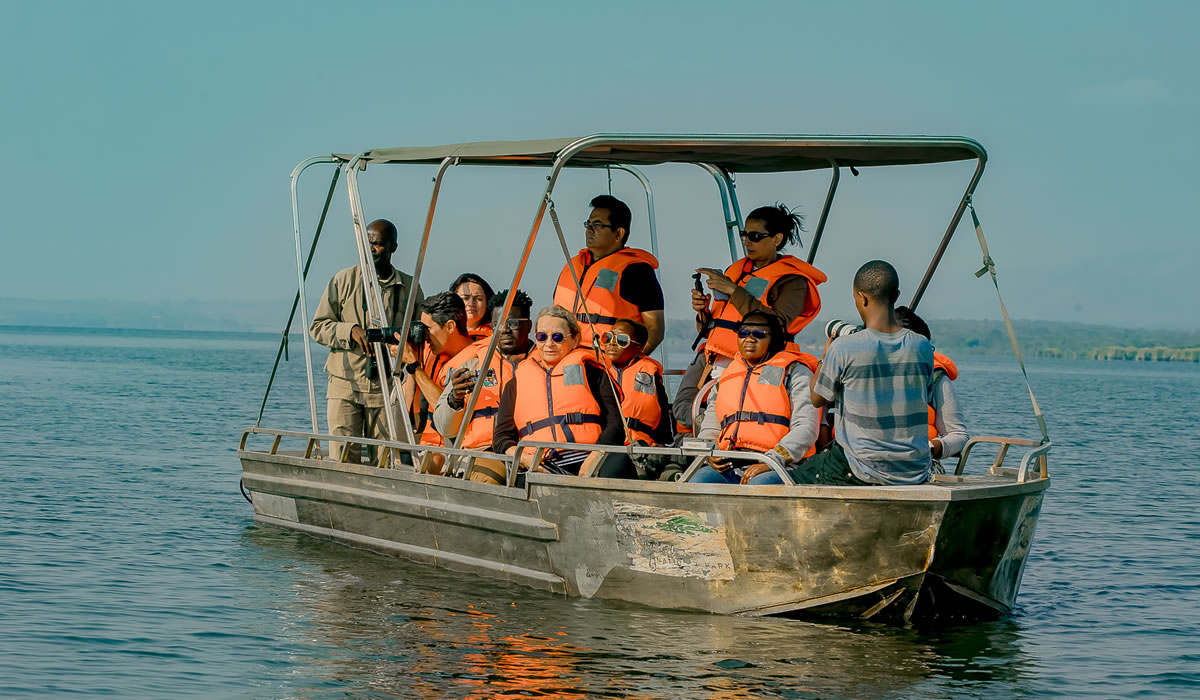Akagera National Park, located in the eastern part of Rwanda, is a haven for wildlife…

Rwanda vs Uganda: Which Country Is Best for Gorilla Trekking?
Gorilla Trekking is one of the most thrilling wildlife experiences on the planet, and Africa offers only a few places where you can encounter mountain gorillas in their natural habitat. Among these, Rwanda and Uganda stand out as the top destinations for gorilla trekking, drawing travellers from across the globe. Both countries offer unforgettable encounters with these endangered primates, but there are key differences in cost, trekking experience, accessibility, infrastructure, and overall tourism appeal. If you’re planning a gorilla safari and are torn between Rwanda vs Uganda, this comprehensive comparison will help you decide which destination suits your preferences, budget, and travel goals best.
Gorilla Trekking in Rwanda
Rwanda offers one of the most luxurious and accessible gorilla trekking experiences in Africa. Gorilla trekking in Rwanda takes place in Volcanoes National Park, located in the northwestern part of the country, just about 2 to 3 hours by road from the capital, Kigali. This proximity makes Rwanda an excellent choice for travellers with limited time.
Volcanoes National Park is home to around 12 habituated gorilla families and offers a well-organized trekking experience. The park is known for its stunning scenery mist-covered mountains, bamboo forests, and high-altitude terrain, offering a magical setting that enhances the trekking experience. Rwanda places strong emphasis on conservation and high-end tourism, which is reflected in its pricing and regulations.
The gorilla permit cost in Rwanda is $1500 per person, making it the most expensive among all gorilla trekking destinations in Africa. However, the cost includes not only the permit but also the services of knowledgeable guides, trackers, park rangers, and a contribution to local community development and conservation efforts.
Rwanda’s gorilla treks are generally considered less strenuous due to the park’s compact size and better trail infrastructure. While treks can still be physically demanding due to the altitude, the terrain is often more accessible compared to Uganda’s dense and hilly forests.
In terms of accommodation, Rwanda boasts a wide range of luxury lodges and eco-friendly camps, many of which offer stunning views of the Virunga Mountains. Options like Bisate Lodge, One&Only Gorilla’s Nest, and Sabyinyo Silverback Lodge cater to high-end travelers looking for premium comfort and service.
Gorilla Trekking in Uganda
Uganda offers a more affordable yet equally captivating gorilla trekking experience. Treks are conducted in Bwindi Impenetrable National Park and Mgahinga Gorilla National Park, both located in the southwestern part of Uganda. Bwindi is the more popular and well-established option, hosting about half of the world’s remaining mountain gorilla population.
The gorilla trekking permit in Uganda costs $800 per person for foreign non-residents, which is nearly half the price of Rwanda’s permit. For travellers who want to see gorillas without breaking the bank, Uganda provides a more budget-friendly alternative without compromising on the quality of the experience.
Gorilla Trekking in Bwindi is known for being more physically challenging. The forest is dense, the terrain steep and uneven, and some gorilla groups are located deep within the park, requiring several hours of hiking. However, many trekkers find the rugged nature of Bwindi to be part of the adventure, and it often leads to more intimate and immersive encounters.
Uganda also offers a unique gorilla habituation experience, available only in Bwindi. For $1500 (the same price as a standard permit in Rwanda), travelers can spend up to four hours with a gorilla family in the process of being habituated to human presence. This experience allows for a deeper understanding of gorilla behavior and is ideal for wildlife enthusiasts, photographers, and researchers.
Accommodation options in Uganda range from budget guesthouses and mid-range lodges to luxury properties like Clouds Mountain Gorilla Lodge and Buhoma Lodge. While the infrastructure may not be as polished as Rwanda’s, Uganda’s lodges are known for their warm hospitality and incredible views.
Accessibility and Travel Logistics
Rwanda is often considered more accessible for gorilla trekking because Volcanoes National Park is only a few hours’ drive from Kigali International Airport. This makes Rwanda ideal for travelers looking to incorporate a short gorilla trek into a longer African safari or for those with limited vacation time. You can land in Kigali in the morning and be at your lodge in the park by the afternoon.
In contrast, Uganda requires a longer journey to reach the gorilla parks. From Entebbe International Airport or Kampala, it takes 8 to 10 hours by road to reach Bwindi or Mgahinga. However, there are domestic flights from Entebbe to Kisoro or Kihihi airstrips, which shorten the travel time considerably, although they come at an additional cost.
If you’re already visiting other parts of Uganda for a more extensive safari, such as Queen Elizabeth National Park or Murchison Falls, then adding a gorilla trek in Bwindi becomes more convenient and logical within your itinerary.
Wildlife and Nature Beyond Gorillas
Both Rwanda and Uganda offer more than just gorilla trekking. In Rwanda, travelers can combine their gorilla experience with a visit to Akagera National Park for a traditional Big Five safari or Nyungwe Forest National Park for chimpanzee tracking and canopy walks. Rwanda’s small size makes it easy to travel between parks and explore multiple experiences within a short timeframe.
Uganda, often referred to as the “Pearl of Africa,” is one of the most biodiverse countries on the continent. In addition to gorilla trekking, Uganda offers chimpanzee trekking in Kibale Forest, boat safaris on the Kazinga Channel, tree-climbing lions in Ishasha, and excellent birdwatching opportunities. Uganda is a fantastic destination for travellers who want to combine wildlife, nature, and culture over a longer trip.
Conservation and Community Impact
Both Rwanda and Uganda have made significant efforts in gorilla conservation and community development. A portion of every gorilla permit fee goes toward protecting the gorillas and supporting the surrounding communities.
Rwanda is praised for its strong political will and clean, safe environment. The government has partnered with luxury tourism operators to maintain a high-quality, low-impact tourism model that helps protect the park’s fragile ecosystem. Communities near the park receive a share of tourism revenue, which is invested in schools, health centers, and infrastructure.
Uganda follows a similar model, with 20 percent of park revenues going back to the communities surrounding Bwindi and Mgahinga. Several community-based tourism projects such as craft markets, cultural walks, and Batwa pygmy experiences, offer opportunities for tourists to engage with locals while supporting sustainable development.
Safety and Tourism Infrastructure
Both Rwanda and Uganda are safe for tourists, and tourism is a key part of each country’s economy. Rwanda stands out for its impressive cleanliness, low crime rates, and efficient systems. The roads to Volcanoes National Park are well-paved, and the general infrastructure caters well to international visitors.
Uganda, while more rugged and adventurous, has a well-established tourism industry with trained guides, reliable tour operators, and increasing investment in roads and facilities. Some areas may feel more remote or less developed compared to Rwanda, but many travellers appreciate the raw, unfiltered experience.
So, Which Country Is Best for Gorilla Trekking?
The answer depends on what you’re looking for.
Choose Rwanda if:
- You have limited time and want quick access to the gorillas.
- You prefer a more polished, luxurious travel experience.
- You’re willing to pay a premium for comfort and convenience.
- You value eco-luxury lodges and modern tourism infrastructure.
Choose Uganda if:
- You are travelling on a moderate budget and want better value for money.
- You’re looking for a more adventurous and physically challenging trek.
- You want to combine gorilla trekking with a longer wildlife or cultural tour.
- You are interested in the unique gorilla habituation experience.
Rwanda and Uganda both offer world-class gorilla trekking experiences that are rich in adventure, emotion, and connection with nature. Whether you choose Rwanda’s luxury and accessibility or Uganda’s rugged charm and affordability, you’re guaranteed a memorable encounter with one of the world’s most remarkable species. For many travellers, the decision ultimately comes down to budget, time, and the kind of adventure you seek. Whichever country you choose, gorilla trekking will be a transformative highlight of your African journey.



